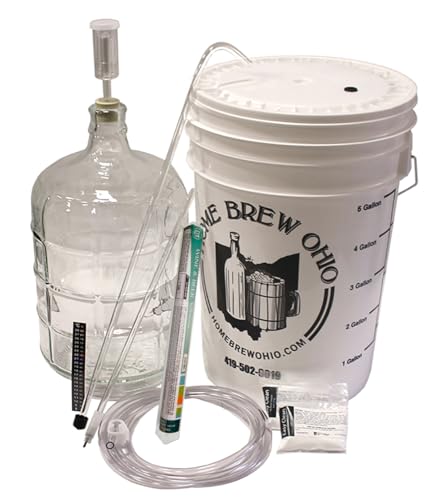I am trying to figure out why my wines rarely finish with the right specific gravity. If a kit's instructions indicate a finishing sg of 0.992 to 0.996 my wines usually finish at 0.998 to 1.000. I did find out that my temperature was too low. WE instructions say use 18-24*C and the place I was fermenting in was 17-20*C so I thought that was okay. After many conversations with LHBS staff and a KR sales rep I know that warmer is better and that 23-24 is the target temp for fermentation. Now I keep my must at 23-24*C. Since then 2 out of 4 kits have finished low enough.
What might I be doing wrong? Of those remaining 2 kits one came out of the primary low enough and the other did not. I should state that one of the 2 remaining kits is the notorious WE Chocolate Raspberry Port. The other is the Ken Ridge Showcase Amarone. So the CRP is known for stuck fermentations and the Amarone had about 1-1.5L too much water in it. The excess is in a 1G just at about 1/3 full, lots of O2 but it was the only place to put it.
The CRP is expected to go to 1.010 but is stuck at 1.020 after chapitalization. The Amarone is expected to go below 0.997 but it appears to be finished at 1.000.
Now that I've explained my situation I am wondering if the two kits that have not worked out well are explainable in that the CRP is a known hard kit and the Amarone is diluted a little and that is reflected in the SG reading.
Thoughts?
What might I be doing wrong? Of those remaining 2 kits one came out of the primary low enough and the other did not. I should state that one of the 2 remaining kits is the notorious WE Chocolate Raspberry Port. The other is the Ken Ridge Showcase Amarone. So the CRP is known for stuck fermentations and the Amarone had about 1-1.5L too much water in it. The excess is in a 1G just at about 1/3 full, lots of O2 but it was the only place to put it.
The CRP is expected to go to 1.010 but is stuck at 1.020 after chapitalization. The Amarone is expected to go below 0.997 but it appears to be finished at 1.000.
Now that I've explained my situation I am wondering if the two kits that have not worked out well are explainable in that the CRP is a known hard kit and the Amarone is diluted a little and that is reflected in the SG reading.
Thoughts?



















































